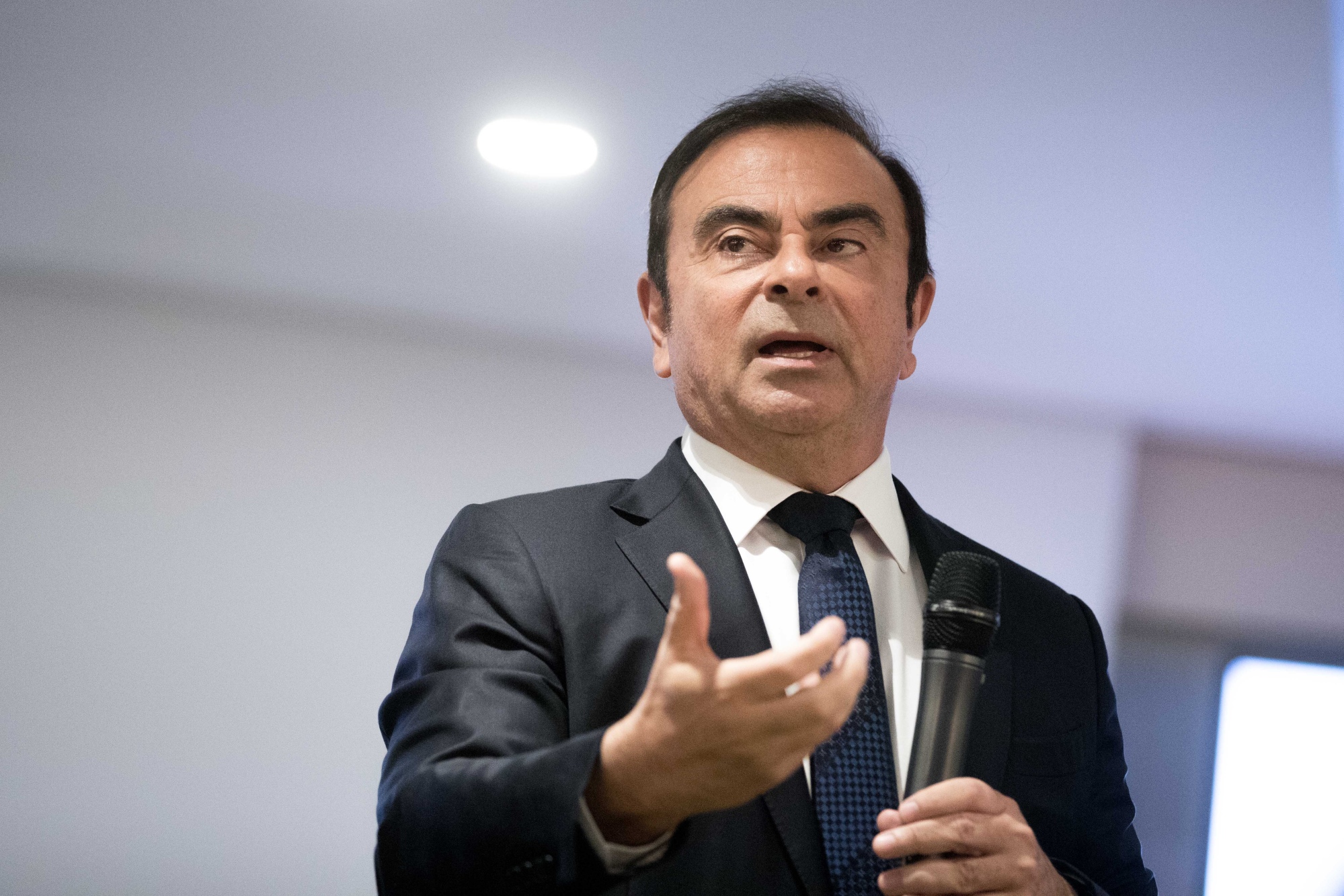Carlos Ghosn has revived two troubled automakers and he’s in the midst of doing so with a third. Now, he’s poised to undertake what might well be his final act: A full merger of Renault SA and
Nissan Motor Co. after almost two decades of cooperation under a complex cross-shareholding alliance.

Carlos Ghosn
Photographer: Christophe Morin/Bloomberg
The globetrotting auto-industry superstar, once nicknamed “Le Cost Killer,” wants to combine the two companies into a single corporation, according to people with knowledge of the matter. The aim is to trim expenses and bulk up enough to survive the industry’s transition to cleaner and greener vehicles–and ensure that the alliance lives on when the 64-year-old retires.
“Ghosn created this monster airplane that has to be hand-flown,” said James Womack, founder of the
Lean Enterprise Institute in Cambridge, Massachusetts. “If he’s going to hand it off to a mere mortal someday, he needs something that’s a bit more flyable.”
The partnership has a byzantine structure that can be confusing for investors. Nissan holds a 15 percent stake of Renault and Renault has 44 percent of Nissan. In 2016, Ghosn added
Mitsubishi Motors Corp. to the mix after the company had been caught falsifying mileage estimates for several of its vehicles and was forced to offer hundreds of millions of dollars in rebates. Further complicating matters, the French government owns 15 percent of Renault, making it the largest shareholder.
Ghosn, who serves as chairman of all three companies, has long said the arrangement was more efficient than a full-blown merger, but now he’s driving the negotiations and plans to run the combined entity, the people said. The alliance declined to comment on the report of the talks.
Stitching together the companies has its political pitfalls. Ghosn has cautioned that Japan won’t agree to closer ties until France pares back its stake. In November, France reduced its shareholding from 19.7 percent, and Ghosn says that over the winter the government had asked the alliance to further “cement” the partnership, without detailing what exactly that would entail.
Job Protection
Pulling off a full merger will be tough because France won’t want to give up its leverage in protecting jobs, and executives in Japan would worry that their French counterparts will dominate the new executive team, according to Maryann Keller, an independent auto analyst in Stamford, Connecticut.
“French workers prefer reporting to other Frenchmen, and Japanese feel the same way,” Keller said. “They can work around this when both sides operate independently. But if you force a merger and start combining operations, it will start to fray.”
The alliance was born in 1999, around the time Daimler purchased Chrysler, a slow motion disaster that ultimately cost the German company nine years of headaches, a big chunk of its reputation, and $37 billion. Other automaking partnerships since then have also ended up in the scrapyard:
General Motors’ capital agreement with Suzuki, a Mazda-Ford tie-up, and a union between Volkswagen and Suzuki that took four years to unwind.
While the Renault-Nissan partnership has chugged along for almost two decades, it hasn’t always been smooth. Renault originally invested in Nissan when the Japanese company was in distress. After a turnaround, Nissan became the biggest profit contributor but remained a lesser partner in the alliance, and today managers and engineers from the two companies are known to butt heads.
Nonetheless, the tie-up has been largely successful, cutting costs by billions of euros while improving quality. Renault-Nissan has grown into the world’s No. 3 automaking group, with sales of 10.6 million vehicles–just behind No. 2 Toyota and within striking distance of market-leader Volkswagen. Christian Stadler, a professor who researches the car industry at Warwick Business school, says the companies have been working together for long enough that they may be able to avoid the kind of pile-ups typical of the industry.
Ghosn has been successful with the alliance because “he pays attention to small but important things,” Mitsubishi Motors CEO Osamu Masuko said in an interview last year. When Mitsubishi was folded in the alliance, Ghosn insisted the press conference in Japan be shifted from Nissan headquarters to rented space nearby to avoid the perception that he’d simply swallowed a wounded competitor.
Going Fishing
In 2012–at age 58–the hyperkinetic Ghosn told McKinsey he didn’t intend to keep “working like a beast” into his 60s, and in January Ghosn hinted that he might step down as Renault’s chief executive officer. Last year, he quit as Nissan’s CEO, retaining the job of chairman. Continuing to manage the three companies is not “sustainable,” he told French lawmakers at a January hearing on industrial policy.
Still, he shows no signs of hitting the brakes, and last month Renault shareholders renewed his mandate for another four years. Thierry Bollore, 54, was appointed as chief operating officer, effectively Ghosn’s No. 2 and heir-apparent at Renault. The change freed Ghosn to focus on strengthening the alliance and continue his merry-go-round schedule that typically sees him spend a week in France, a week in Japan, another week or two at various destinations in Asia or the Americas, and then back to Paris to start it all over again.
Despite the grueling schedule of 65-hour work-weeks, plus time spent on his corporate jet, Ghosn says he’s leaning toward the model of Ferdinand Piëch, who served as chairman of Volkswagen until age 78. “I am not,” Ghosn said in an interview last year, “just shutting the door and going fishing or something.”
— With assistance by Kae Inoue
